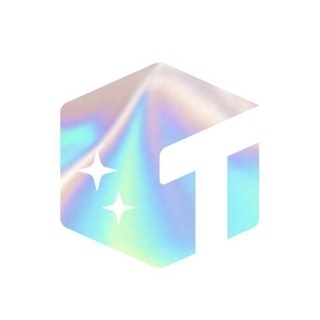
En lien avec la crypto
Calculateur de prix
Historique des prix
Prédiction de prix
Analyse technique
Guide d'achat crypto
Catégorie de crypto
Calculateur de profit
En lien avec le trading
Achat/Vente
Dépôt/Retrait
Spot
Marge
Futures USDT-M
Futures Coin-M
Bots de trading
Copy Trading
Earn
Pré-marché
Actualités de la crypto
Actualités cVault.finance
Alerte cVault.finance
Calendrier des événements
ICO
Airdrop

Prix de cVault.financeCORE
Que pensez-vous de cVault.finance aujourd'hui ?
Prix de cVault.finance aujourd'hui
Quel est le prix le plus élevé de CORE ?
Quel est le prix le plus bas de CORE ?
Prédiction de prix de cVault.finance
Quel est le bon moment pour acheter CORE ? Dois-je acheter ou vendre CORE maintenant ?
Quel sera le prix de CORE en 2026 ?
Quel sera le prix de CORE en 2031 ?
Historique des prix de cVault.finance (USD)
 Prix le plus bas
Prix le plus bas Prix le plus élevé
Prix le plus élevé 
Données de marché de cVault.finance
Historique de capitalisation cVault.finance
Avoirs cVault.finance
Matrice de distribution des avoirs cVault.finance
Avoirs cVault.finance par concentration
Adresses cVault.finance par durée de détention

Notes cVault.finance
À propos de cVault.finance (CORE)
Les cryptomonnaies ont révolutionné le paysage financier et économique mondial. Parmi les nombreuses cryptomonnaies existantes, cVault.finance se démarque par ses caractéristiques uniques et sa pertinence historique. cVault.finance est une cryptomonnaie décentralisée, construite sur la blockchain Ethereum. Elle est conçue pour offrir une gestion intelligente des actifs numériques, en utilisant notamment des algorithmes avancés pour maximiser la sécurité et minimiser les risques. L'objectif principal de cVault.finance est de permettre aux utilisateurs de stocker et de multiplier leur capital de manière sécurisée et transparente. Parmi les caractéristiques clés de cVault.finance, on trouve les contrats intelligents qui permettent la sécurisation des actifs, l'automatisation des transactions et l'élimination des tiers de confiance. Grâce à ces contrats intelligents, les utilisateurs de cVault.finance peuvent échanger des actifs numériques en toute confiance, sans avoir recours à une autorité centrale. La transparence est également une caractéristique importante de cVault.finance. Toutes les transactions effectuées sur la blockchain Ethereum sont enregistrées de manière immuable et sont accessibles au public. Cela permet une vérification indépendante des transactions et assure l'intégrité du système. En termes de sécurité, cVault.finance utilise des protocoles avancés pour protéger les actifs numériques de ses utilisateurs. Les fonds sont stockés dans des portefeuilles hors ligne sécurisés, ce qui réduit considérablement les risques de piratage ou de vol. Enfin, cVault.finance offre également des fonctionnalités de rendement passif, permettant aux utilisateurs de gagner des intérêts sur leurs avoirs de cryptomonnaie. Grâce à des mécanismes d'agriculture et de staking, les utilisateurs peuvent accroître leur capital de manière passive, sans avoir à effectuer des transactions actives. L'émergence de cVault.finance souligne l'importance croissante des cryptomonnaies dans notre société. En offrant des fonctionnalités avancées, une transparence et une sécurité accrues, cVault.finance contribue à rendre les actifs numériques accessibles à un plus large public. En conclusion, cVault.finance est une cryptomonnaie innovante, qui offre une gestion intelligente des actifs numériques ainsi que des fonctionnalités de rendement passif. En mettant l'accent sur la sécurité et la transparence, cVault.finance ouvre la voie à une nouvelle ère financière, où les utilisateurs peuvent contrôler pleinement leurs actifs numériques sans avoir à faire confiance à des tiers.
CORE en devise locale
- 1
- 2
- 3
- 4
- 5
Actualités cVault.finance

En bref Les développeurs du cœur d'Ethereum ont confirmé le calendrier de mise à niveau de Pectra pour les réseaux de test Holesky et Sepolia les 24 février et 5 mars, respectivement, avec un lancement ciblé du réseau principal en avril.



En bref Lido a présenté Lido V3, transformant le jalonnement Ethereum, et a introduit stVaults, une infrastructure modulaire conçue pour soutenir l'adoption institutionnelle, les stratégies de jalonnement avancées et une intégration plus approfondie avec DeFi.
Acheter plus
FAQ
Quel est le prix actuel de cVault.finance ?
Quel est le volume de trading sur 24 heures de cVault.finance ?
Quel est le record historique de cVault.finance ?
Puis-je acheter cVault.finance sur Bitget ?
Puis-je gagner des revenus réguliers en investissant dans cVault.finance ?
Où puis-je acheter des cVault.finance au meilleur prix ?
Où puis-je acheter des cryptos ?
Section vidéo – vérifier son identité rapidement

Bitget Insights




Actifs liés






























![Giftedhands [Old]](https://img.bgstatic.com/multiLang/coinPriceLogo/e070d317cb2c472f68ff9c08fc2583561710435803801.png)



Données sociales de cVault.finance
Au cours des dernières 24 heures, le score de sentiment sur les réseaux sociaux de cVault.finance est de 3, et le sentiment sur les réseaux sociaux concernant la tendance du prix de cVault.finance est Haussier. Le score global de cVault.finance sur les réseaux sociaux est de 10,024, ce qui le classe au 218ème rang parmi toutes les cryptomonnaies.
Selon LunarCrush, au cours des dernières 24 heures, les cryptomonnaies ont été mentionnées sur les réseaux sociaux un total de 1,058,120 fois. cVault.finance a été mentionné avec un taux de fréquence de 0.01%, se classant au 177ème rang parmi toutes les cryptomonnaies.
Au cours des dernières 24 heures, 492 utilisateurs uniques ont discuté de cVault.finance, avec un total de 151 mentions de cVault.finance. Toutefois, par rapport à la période de 24 heures précédente, le nombre d'utilisateurs uniques a augmenté de 1%, et le nombre total de mentions a augmenté de 57%.
Sur X, il y a eu un total de 1 posts mentionnant cVault.finance au cours des dernières 24 heures. Parmi eux, 0% sont haussiers sur cVault.finance, 0% sont baissiers sur cVault.finance, et 100% sont neutres sur cVault.finance.
Sur Reddit, il y a eu 0 posts mentionnant au cours des dernières 24 heures. Par rapport à la période de 24 heures précédente, le nombre de mentions diminué a augmenté de 100%.
Aperçu social
3